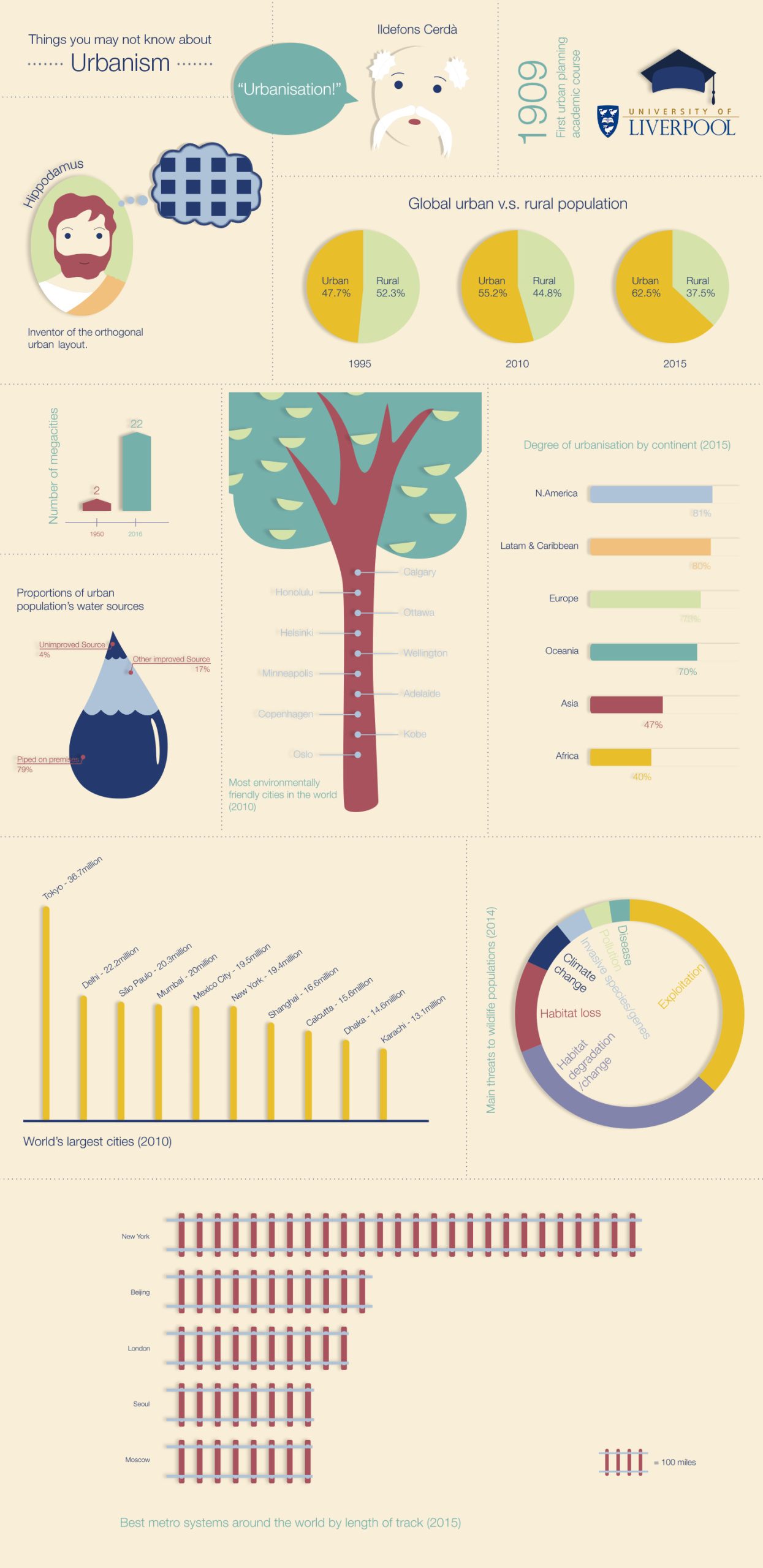Estimated reading time: 3 min
Urbanism has swept the globe over the last 60 years as populations have skyrocketed and cities have become home to the majority of the world’s population. The reasons for this are myriad and some of the examples are particularly staggering. However, if we look beyond opinion and theories and to the facts, we discover a history filled with surprises and one that paints an interesting outlook for the future.
- Urban planning and design dates back to the Mesopotamian, Indus Valley, Minoan and Egyptian civilizations in the 300 BC.
- The Greek philosopher, Hippodamus, is widely regarded as the first town planner and creator of the orthogonal urban layout.
- The University of Liverpool offered the first ever course in Urban Planning in 1909.
- Ildefons Cerda is credited with inventing the term ‘urbanisation’.
- In 1950, there were two megacities in the world with populations over 10 million. Today there are 22 such cities.

- 54% of the world’s population now live in urban areas.
- Africa is the continent with the fastest growing rate of urbanisation (4.87%)
- Baihia (China), Ghaziabad (India) and Sana’a (Yemen) are the fastest growing cities in the world.
- Tokyo is the world’s most populated city with an agglomeration of 38 million inhabitants.
- By 2050, 66% of the world’s population is projected to be urban.
The figures speak to the remarkable growth that we are currently experiencing and, pointedly, suggest the need for innovative, sustainable planning in both developed and developing areas. Moreover, it’s important developing zones avoids the mistakes made in cities that are now developed. Singapore, for instance, offers the kind of example that needs to be followed. As many other cities have discovered, poor urban design can not only blight the landscape, it can stunt the growth of cities and, indeed, the citizens they are designed for. The challenge that urbanism poses, it would seem, is how exactly do we do more with less.


